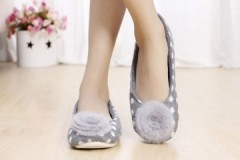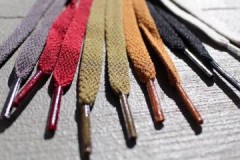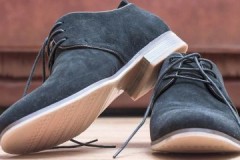Several proven ways to quickly dry your shoes after washing or rain
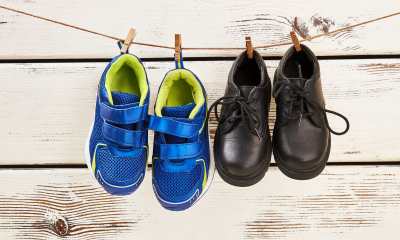 After washing, shoes require proper drying. The preservation of its shape, appearance and functionality largely depends on this.
After washing, shoes require proper drying. The preservation of its shape, appearance and functionality largely depends on this.
Home drying skills will also help if your shoes get wet in the rain.
In this article, we'll show you how to dry your shoes quickly after washing and what actions to avoid so as not to spoil your favorite pair.
Content
General rules
Drying fabric or leather shoes is not difficult if you know the basic rules and apply them in practice.
These include:
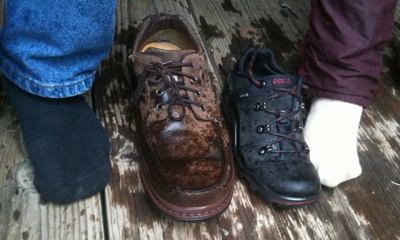 Wet leather upper is easily exposed to external influences. Because of this, special attention should be paid to drying, even when slightly wet. If her feet are wet in the rain, then she should try to take off her shoes as quickly as possible.
Wet leather upper is easily exposed to external influences. Because of this, special attention should be paid to drying, even when slightly wet. If her feet are wet in the rain, then she should try to take off her shoes as quickly as possible.- Moisture is removed with a soft cloth outside and inside, if there is water inside, it is drained.
- Drying should be done in a well ventilated area.
- It is necessary to take into account the materials that were used for the manufacture.
The sooner you start drying wet shoes, the better the result will be.
Drying methods at home
Drying your shoes at home is effective and easy. Available materials and devices will come to the rescuethat are in the household.
Paper
Using paper is one of the easiest ways. Lumps are formed from soft sheets that absorb moisture well. They carefully, tamping, stuff the shoes.
As the paper becomes saturated with moisture, it is changed to dry... Drying is carried out at room temperature in a dry place.
Rice
Rice groats have the ability to absorb moisture. This quality will come into play when drying washed or just wet steam.
Procedure:
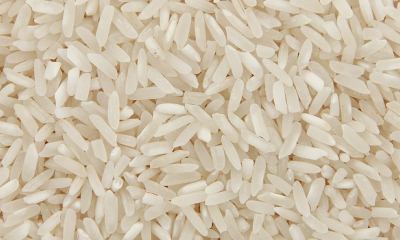 You need to prepare a tray or plastic box large enough to fit your shoes.
You need to prepare a tray or plastic box large enough to fit your shoes.- Pour rice groats into the prepared container so that it covers the bottom by at least 30-50 mm.
- Put wet shoes on the rice with the soles up.
- Keep in this position for at least 4 hours.
Silica gel
Silica Gel Toilet Fillers are highly absorbent. For drying, you need the filler itself and regular socks.
Procedure:
- pour silica gel into each sock;
- tie the top edge of the sock;
- put socks inside;
- withstand the time required for drying.
Cat litter
A good substitute for silica gel is cat litter.... Gel can be used similarly to the previous version, and mineral or woody must first be put in two socks, and only then used.
This precaution is due to the presence of small particles of the substance that may remain after drying.
Hair dryer
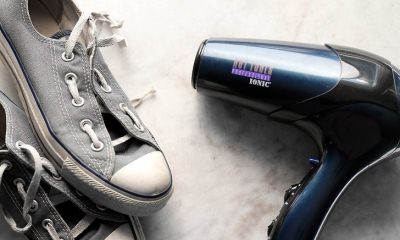 As one of the home drying options, a regular hair dryer will do.
As one of the home drying options, a regular hair dryer will do.
You need to apply it according to the instructions:
- Set the setting to cool.
- Turn on the hairdryer.
- Blow air into the shoe from a distance of approx. 0.3 m.
The use of a household hand-held hair dryer is not a very convenient way, since it takes up to 3 hours of almost continuous blowing to dry completely.
Vacuum cleaner
If it is not possible to apply other more convenient options, you can use a conventional vacuum cleaner.
Another option is to substitute the wet steam closer to the vacuum cleaner so that the heated air hits it.... It will not be possible to completely dry completely wet shoes in 15-20 minutes, you can only dry them a little.
Fan
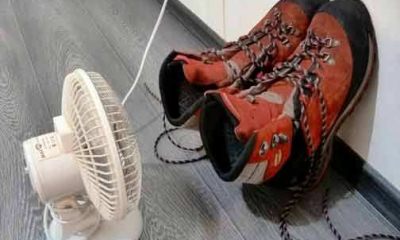 The fan heater will help in drying. To do this, sneakers or another pair should be placed in such a way that air flows freely through the inside.
The fan heater will help in drying. To do this, sneakers or another pair should be placed in such a way that air flows freely through the inside.
In this case, the distance from the shoe to the fan must be at least 0.2 m. In this case, the fan speed must be set to maximum. And the shoes themselves should be unbuttoned so that the air blows freely on the inside.
Disadvantages of this method:
- Difficulty arranging shoe placement in a suitable way
- long drying process;
- low efficiency.
Warm floor
You can also take advantage of the warm floor for drying shoes. This method is gentle, but poorly effective due to the fact that it takes a lot of time to completely dry.
Electric dryers
Electric dryers are special devices designed for home use or the use of the service industry.
They are of several types, which differ in a number of parameters:
- appearance;
- principle of operation;
- cost, etc.
Principles for choosing an electric dryer:
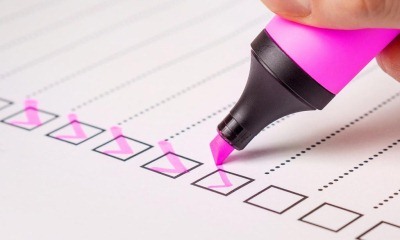 The quality of the material.
The quality of the material.- No damage to the case and power cord.
- The size of the working part, which allows it to easily fit inside any pair of shoes.
- The longer the cord, the easier it will be to use the appliance.
- It is desirable that the warm-up time be about a quarter of an hour. A longer heating period will take a longer time for the vapor to dry.
- The heating temperature must be up to +50 or + 60 ° С. A higher heating rate is not desirable, as it can lead to damage to shoes, and weak heating is ineffective.
Professional industrial shoe dryers are designed for use in laundry plants. And they are rarely used at home.
They are quite bulky, have a high cost, consume a lot of electricity.... For children's shoes, separate models are produced, designed for a small size.
Models with flexible heating loops or two blocks
The cheapest option is electric dryers with simple organization. Many of these are flexible, insulated loop that fits comfortably inside the shoe.
The advantages of this choice:
- simplicity of the device;
- the ability to use on the road, on business trips, etc.;
- compactness;
- soft effect on the shoes themselves;
- small cost (from 130 rubles).
Disadvantages:
- takes a long time to dry completely;
- very cheap designs can be fragile.
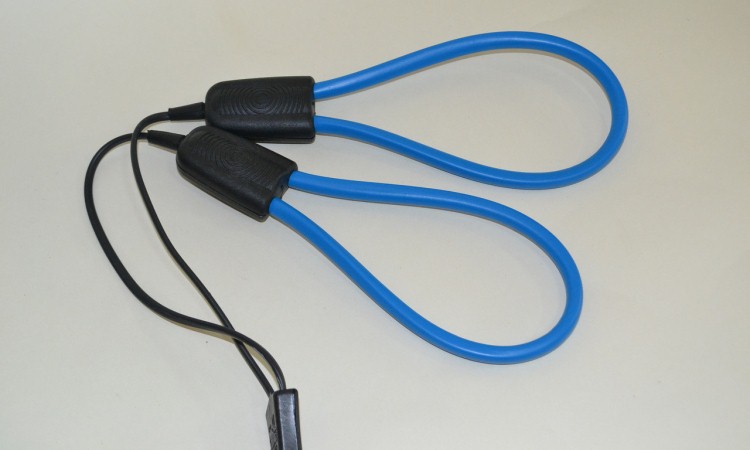
Wooden stand-heaters
Wooden stands are made from moisture resistant plywood. They are used not only for drying shoes, but also for warming up the sill zone, heating feet, etc.
Advantages:
- Ease of operation.
- Multifunctionality, allowing you to use the device for other purposes, not only drying shoes.
- Ease of use.
Cons of using:
- It takes a long time to dry the shoes after washing.
- Stand dimensions.
- Inconvenience of transportation.
- Relatively high cost.
The action of such a local electrical appliance is similar to a warm floor.
UV Dryers
A shoe dryer with ultraviolet radiation allows not only drying, but also antibacterial treatment. During the operation of such a device, an unpleasant odor and microorganisms that cause fungus are eliminated.
Advantages:
- efficiency;
- suitable even for delicate shoes;
- the presence of a timer (for many models);
- prevention of fungus.
The disadvantage is the high cost (about 900 rubles for a model with a timer).
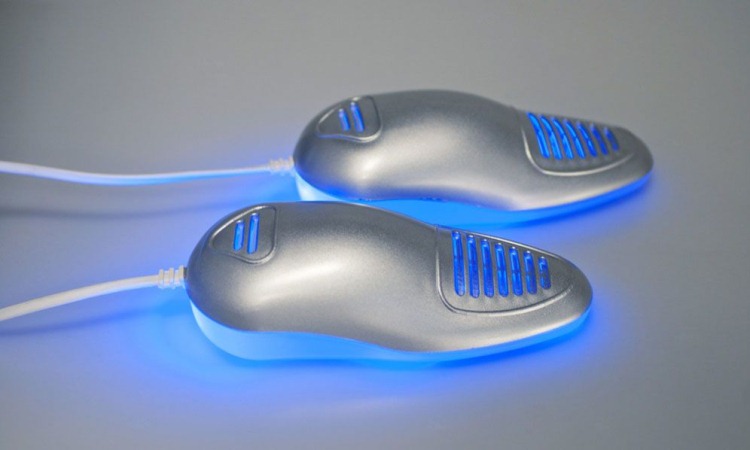
Ionizers
The supply of fresh ozonized air removes odors and moisture from shoes, imparting freshness. An example of such a device is the Zenit xj-300, which provides 1000 ions per 1 cm³.
Advantages:
- Efficiency.
- Silent operation.
- Light weight (about 0.2 kg).
- Elimination of odors.
Disadvantages:
- It takes time to dry.
- I need batteries.
- High price (about 1,500 rubles).
The presence of additional functions leads to an increase in the cost of models.
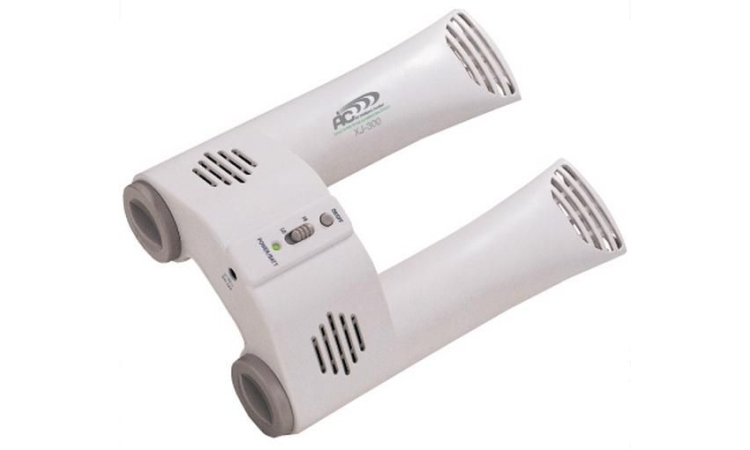
Drying features depending on the material
It is necessary to take into account what material the shoes are made of, which require drying. This will affect the choice of a particular method.
Before starting drying, regardless of the material of the top, preparatory measures should be taken:
- if the steam is too wet, drain the water and blot with a well-absorbing cloth;
- pull out the laces and insoles.
the cloth
Sneakers, canvas trainers and some types of indoor shoes can be washed at home.
Suitable drying methods:
- natural conditions;
- use of absorbents.
Do not use electrical appliances to dry fabric shoes.
A natural skin
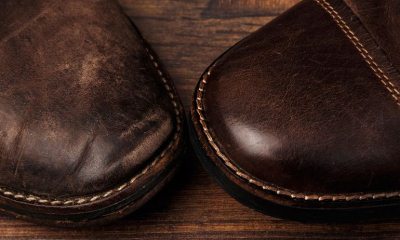 Drying natural leather requires adherence to the following rules:
Drying natural leather requires adherence to the following rules:
- Prohibition of heating near the radiator.
- Natural absorbents can be used.
- Choose a well-ventilated place to dry.
After drying the shoes, it must be treated with special agents (impregnation, cream).
Suede leather
Suede is also a demanding material to care for.Such shoes cannot be washed in an automatic washing machine. But if you had to clean it or it got wet after the rain, then you should use the following drying methods:
- apply an absorbent;
- put in a dry place;
- if necessary, it is permissible to use a hair dryer to dry without bringing it close to the surface.
The drying process of a suede pair according to all the rules is long, taking about a day.
Nubuck
Like suede, nubuck requires delicate handling, strict adherence to the rules of care... It is impossible to completely wash such shoes, as well as to expose them to excessive, let alone prolonged wetting.
Rubber
Boots and other rubber footwear can be dried in almost any way you can. The only limitation is a ban on being near a source of high temperature.
Membrane
A modern material, membrane fabric, is often used by sports shoe makers. You should not stimulate the drying process of such a pair. Experts recommend simply stuffing the socks of such sneakers with paper or using an absorbent.
How can you not dry?
In an effort to speed up the process of drying your beloved pair, you should remember some tough prohibitions, ignoring which can lead to damage to your shoes.
These points include:
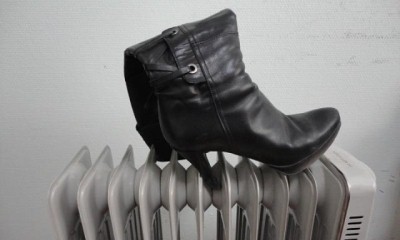 do not dry near open fire;
do not dry near open fire;- do not postpone drying until later;
- the location of wet steam on a heating radiator or other heating device can lead to damage (unsticking, loss of functional characteristics of modern materials, for example, membranes, etc.);
- you should not try to speed up the process by acting on too high temperatures;
- you cannot use the "drying" mode of the washing machine;
- do not expose wet steam to the open sun.
Ignoring the recommendations and breaking the rules can lead to damage to shoes.
8 recommendations
How to dry your shoes after washing quickly and efficiently? Professional advice will come to the rescue:
- If saving space is not a harsh cost, and financial costs are not limited, then the best option is a professional shoe dryer.
- The compact size of electric dryers is a convenient option for home use.
- To speed up the drying process, it is recommended to use any homemade method available for implementation.
- The laces and insoles of wet shoes are dried separately, and only then returned to their place.
- Exposure to high temperatures is undesirable, regardless of the model and material of manufacture.
- For shoes to last longer, they must be cared for regularly, including drying the insoles.
- Completely wet steam should dry for at least 24 hours after washing.
- When shoe washing and drying should avoid temperature contrast.
Related Videos
How to quickly dry your shoes without spoiling it, the video will tell you:
Conclusion
There are many different ways to dry your shoes. To get a good result, you can use one of the homemade recipes or use specially designed electrical appliances.

